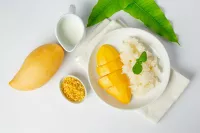How to Cook with Radishes
If you have ever tasted a raw radish, then you'll know how much kick and peppery spice these little crunchy flavor bombs can have. This is why they make an excellent choice for salads and have earned a prominent place on any Charcuterie board. Now, you might have heard of Daikon radishes that are big favorites for Asian recipes, but essentially, any kind of radish can be used for cooking.
By now you might be wondering what cooking does to radishes. Aside from making them a bit less crunchy, they rapidly absorb when used in cooking. The overall flavor also becomes mellowed and more defined even if you are not adding spices or seasonings. Here are some of the methods that work the best.
Braising
Many forms of Asian cooking, in particular Chinese and Japanese recipes, include Daikon radishes that are braised. Braising is typically cooking something within a flavorful liquid inside a cooking pot. Usually, you will find modern recipes that include crock-pots and Dutch ovens to braise entire meals. Adding radishes is a bit like adding potatoes and will soak up all of that liquid.
You can add radishes without slicing them or cut them in half so they absorb liquid faster. Since they are smaller than potatoes radishes are excellent additions to beef and pork stews, and add wonderful texture when paired with these slow-cooked meats.
Grilled
Perhaps you have seen trending videos on social media where the newest craze is grilling lettuce on a grill. One thing you aren't seeing is grilling radishes, yet. The practice is becoming more popular. Add nice thick grilled slices to your burger instead of onions. The advantage is that grilling helps soften them up so they are not overly crunchy.
Another advantage is that you can get that smoky flavor within radishes and even dip these slices into marinades to add intricate flavors. Furthermore, you don’t have to worry about losing the red ring on the outer edge, which helps make them the perfect substitute for red onion.
Roasted
If you're big on making pot roast or any roast that includes typical veggies such as potatoes and carrots, then you have to try adding radishes next time. Not only do radishes cook in less time than something more common such as squash, but you also won't believe these cook in as little as 10 minutes. This makes them ideal for adding last to your roast dishes so you can adjust the amount of texture they offer when they are done.
What is more interesting is that they do start to caramelize when juices and sauces from your roast are spooned over them. This makes your radishes even more delicious!
Green stems
You might never have thought that the green stems that come with a radish bunch are also edible. When the radishes are initially trimmed, you can add the leaves to your meals as a garnish and even add the stems into salads. Now take this to the next level and add them to stir fry dishes for a tasty addition that goes great with your green onions and chives. These tops are perfectly suited to making sauces and can be chopped up finely for salsas.
You can use them for added flavor in soups, stews, and veggie dishes of all kinds. Just wait until you dice radish tops and sprinkle them onto Italian pasta as a garnish.
Pickled radishes
If you love a different kind of crunch, you have to try pickling your radishes. Slice them, dice them, or even use that curly spiral tool on them, you'll have plenty of ideas on how to prepare pickled radishes once you discover how refreshingly tasty they turn out.
If you love Kimchi, adding radish is an absolute must for fermented cabbage and cucumber. Usually, they add Daikon radish, but you can experiment with any kind that you normally enjoy.

 How to Cook Spinach
How to Cook Spinach How to Cut and Dice Mango
How to Cut and Dice Mango



